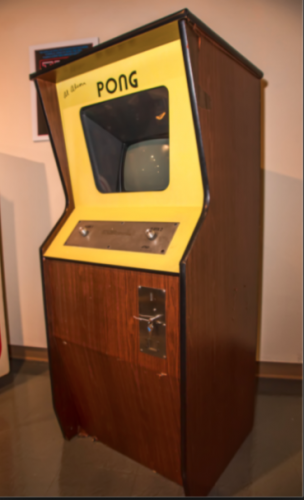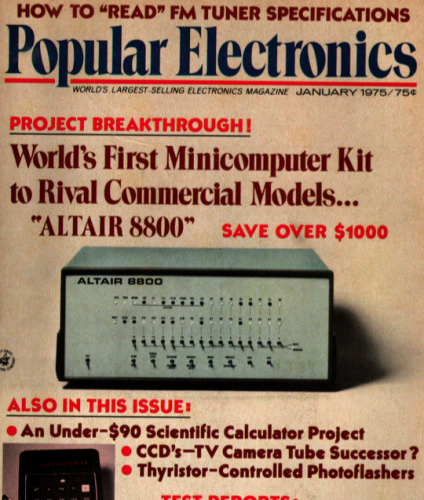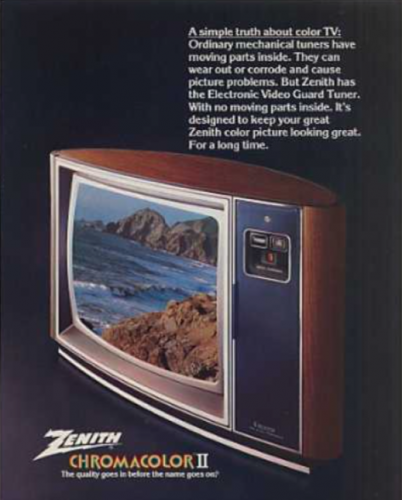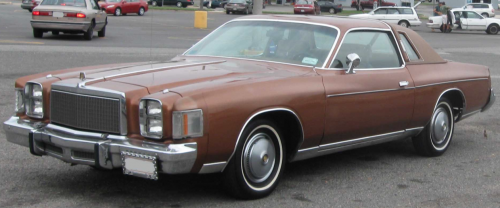marauder2048 said:
Can always count on you guys!
But note this report was in 2013. The 2016 FSA completely changes the calculus since US now needs 66+ SSN's and not 48.
So I'm reading through this appendix and I'm not convinced these arguments are convincing today.
Utilizing the Virginia-Class w/smaller missile - "This would carry forward many of the shortfalls of a Virginia-based SSBN we just discussed, and add to it a long list of new issues."
Ok - let's read through the many "shortfalls" listed above..
1. i.) Not meet survivability (stealth) requirements due to poor hull streamlining and ii.) lack of a drive train able to quietly propel a much larger ship
i.) This doesn't apply since the missile would be smaller, also, if VPM is stealthy enough for attack sub then it should be "good enough", especially since risk is spread out over more boats.
ii.) Pump jet for Columbia coming from Virginia-class. Also, they've cut the Columbia-Class back to 16 tubes (from 20) so they could use a smaller propulsion system and existing components already designed for Virginia-Class. So this "shortfall" is just old reasoning.
2. Not meet at-sea availability requirements due to longer refit times (since equipment is packed more tightly within the hull, it requires more time to replace, repair and retest).
If I'm increasing the # of 774's built (from 1 to 3 in '21) and all have VPM's starting in 2019 then by 2030 I've got at least 30 boats that can carry a new missile ready by 2030. Those 30 boats equate to 120 tubes for nuclear missiles. The number of boats increases until all boats (66-88 = 264-352 tubes) are capable of launching the new missile. It seems like a longer refit time wouldn't matter much if all your boats are capable of launching nuclear missiles. The at-sea availability for the number of required tubes is constant.
3. Not meet availability requirements due to a longer mid-life overhaul (refueling needed)
When available, put a new 'life of the boat' 42-year reactor in the 774's as a block upgrade. Same as what's been done with the jet engine development where GE & PW have been told to make their AETP engines the same size as the F135 engine. Since they've reduced the envelope of the Columbia-Class then it's likely that designing the new power plant would not be difficult to make happen for the 774's if it's not been done already.
4. Require a larger number of submarines to meet the same operational requirement
Yes - but that's a GOOD thing. They're all basically the same except for block upgrades. It's also going to be massively cheaper to operate and maintain this fleet. Columbia-Class is estimated at USD9Billion + USD6Billion in detailed design and nonrecurring engineering costs in 2015 dollars. 774's w/VPM will be ~USD3.5Billion in 2019 dollars. Block upgrades are spread over many boats. It's just going to be much less expensive to get better, more capable boats. Plus, now we've got the 2016 FSA specifying 66 SSN's and 12 SSBN's - 88 boats. It becomes even more expensive to maintain 12 boats that are different amongst a larger fleet of 88 than a fleet of 60.
5. Reduce the deterrent value needed to protect the country (fewer missiles, warheads at-sea)
Just not possible w/66-88 boats (264-352 tubes) capable. So, actually, changing to using 774's increases the number of tubes from 192 to 264/352. The deterrent value and warheads at sea is actually larger utilizing 774's with VPM's.
6. Be more expensive than other alternatives due to extensive redesign of Virginia systems to work with the large missile compartment (for example, a taller sail, larger control surfaces and more robust support systems)
N/A - We're talking about 774's w/smaller missiles. Not larger 774's.
7. Developing a new nuclear missile from scratch with an industrial base that last produced a new design more than 20 years ago would be challenging, costly and require extensive testing.
We're starting on GBSD. It's a great time to employ defense contractors in risk reduction tech development that can be used for both GBSD and a D5 replacement. GBSD is required by late 2020's so this would work out for D5 replacement as well.
8. We deliberately decided to extend the life of the current missile to decouple and de-risk the complex (and costly) missile development program from the new replacement submarine program.
I'm all for de-coupling. We've seen it with B-21 and AETP programs. It can be done for missiles as well. There are risk reduction options.
9. i.) Additionally, a smaller missile means a shorter employment range requiring longer SSBN patrol transits. ii.) This would compromise survivability, require more submarines at sea and ultimately weaken our deterrence effectiveness.
i.) Only until permanent D5 replacement is developed. Trident II was designed in the 1970's. It's ridiculous to suggest that an equitable replacement cannot be designed for the VPT within the required time frame.
ii.) No, there would significantly more boats at sea which enhances survivability. Also, more submarines at sea is required by the 2016 FAS anyway.
10. With significant cost, technical and schedule risks, there is little about this option that is attractive.
The cost, technical and schedule risk is all on the Columbia-Class replacement program. Acquisition is USD84Billion+ for 12 boats Technical risk has completely changed since significant technology transfer from Virginia-Class is now slated to Columbia-Class to reduce costs. Schedule risk does not exist as since this report was written the 774 shipyard production has dropped from 72 months to <30 months. Also, industry and the Navy have stated that building qty-2 Virginia-Class boats is possible while building Columbia-Class. That means that building qty-3 Virginia-Class boats simultaneously will be possible. Building an entirely new class of submarine for only 12 boats is not attractive, cost effective or likely to be completed on schedule whereas adding a third Virginia-Class boat will create greater efficiencies.
So what about the benefits?
774 shortfall disappears. Constant deployment of at least 10 SSN's (2013 requirement) is assured. Ten SSN's w/4 large tubes per boat is 40 D5 replacements deployed at all times. If that number is increased to 22-29 SSN's then tasking would be better managed and 88-116 D5 replacements would be deployed at all times vs 48 using Columbia-Class. Note that the 10 SSN deployment requirement was before the 2016 Force Structure Assessment that is requesting 66 SSN's & 12 SSBN's. Commanders are asking for 80 SSN's to meet tasking requirements.
SSBN shortfall disappears. Acquiring Columbia-Class will reduce the number of ballistic missile tubes from 336 w/Ohio to 220 by 2032 when the number of boats drops to 10. Utilizing 774 Block V and beyond, available tasking ballistic missile boats would be at least 8 Ohio-Class boats and 33 (3 per year) VPM 774's. With 4 tubes from VPM and 24 per Ohio that's 225 tubes across 40 boats increasing at 3 boats per year in 2032. An increase of 5 tubes and 30 boats. Also, Ohio-class may experience some marginal life extension as tasking is decreased and fuel life is extended. It's also likely that a Triton II replacement will be a much more efficient ballistic missile. That could decrease the number of required missiles creating opportunity for even more tubes to be used for other solutions.
Wartime demand of 35 SSN's is assured. W/66-88 774's, one would expect a surge of 40-50+ is possible. That's 160/200+ tubes of D5 replacement missiles vs 64 possible w/Columbia-Class.
In 2006, 774 shipyard construction time was 72 months. It's ~30 months from being laid down to commissioning today. First Columbia will take many years longer than that. Building qty-3 774 boats a year will cut build time further.
The 2015 estimated USD84Billion in acquisition costs for 12 Columbia-Class boats (sans dev $) could be spent on other things. Perhaps funding CVN's every 4 years instead of 5 or perhaps additional ARG's, fighters or even the new nuclear missile technology risk buy down for
both GBSD and D5 replacement.
---
Next Steps?
1. Stop production of Columbia-Class immediately. Continue with tech development for Columbia-Class but refocus tech dev for use on 774's as block upgrades beginning w/VPM additions in 2019 purchases. Add new tech in block upgrades as it becomes available.
2. Begin purchasing qty-3 774's in 2021 or sooner if vendor capacity allows. Build Qty-3 774's until the schedule allows for 66+ boats to be maintained. I'd also include an offer for the UK to purchase 774's if they want. If the US is building qty-3 Virginia-Class boats a year the cost savings may be appealing to them.
3. Ask LM for a proposal for a modified D5 proposal for what they can build by 2021 that will fit in the VPT's. This is really just a risk reduction requirement. If there are problems in #4 and #5 below then you need a the modified D5. That allows the missiles to be ready as the new 774's w/VPM's are completed. Even if the capabilities are modified you can immediately begin reducing the tasking of the Ohio-Class to extend their service lives as the 1st is scheduled for decommissioning in 2027. This allows time for #5 below. It may also encourage LM, Boeing, et. al. to begin assigning resources to #4 for #5.
4. Couple the Trident II replacement to the GBSD program for the development of new tech only. Not combined missile build programs. Run this the way the AETP program and tech risk reduction for B-21 has been run.
New smaller rocket motors
New warheads
New countermeasures
New guidance systems
5. Build GBSD and D5 replacement utilizing tech developed in #4. Not combined missile programs, just common risk reduction programs. D5 replacement is needed about the same time as GBSD (2027-30?) so perhaps this would work out well.
Summary
Columbia-Class is where F-35 was ~1998. Right at the beginning with a lot of money getting ready to be spent. Defense acquisition has learned some hard lessons since then that have resulted in great programs like AETP and B-21. Let's evaluate once more the Columbia-Class assumptions prior to moving forward.
There's been a sea-change in requirements since the Ohio Replacement report was produced in 2013. The 2016 FAS is calling for a significantly larger Navy. The Air Force requires the GBSD system. Threats around the world have increased significantly. These changes suggest that the Columbia-Class SSBN solution no longer meets the needs of the United States technologically, operationally or fiscally.
The SCO should start funding technical risk reduction for Triton II replacement ballistic missiles to reach IOC by the late 2020's. These missiles will be deployed in Virginia-Class submarines utilizing the Virginia Payload Modules large-diameter missile tubes. Simultaneously, the SCO should rapidly deploy by the early 2020's as a risk reduction measure a Triton II interim replacement that will fit the VPT utilizing what technology is currently available.
I've included some pictures of other technology designed in the 1970's besides the Triton II.
--
Any thoughts?








